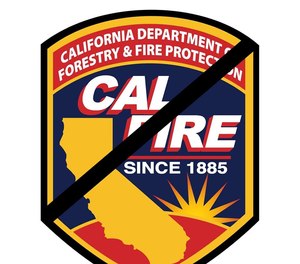
Cal Fire is awarding a billion dollars in grant funding over the next few years, officials said
Chris Kaufman
Appeal-Democrat, Marysville, Calif.
MARYSVILLE, Calif. — Cal Fire grant funding could help Yuba County landowners in the forested areas of the foothills minimize their fire risk and improve forest health.
Ryan Rauzon, a contractor with American Forest Foundation, said they have four landowners they’re working with at different stages of the grant-funded project.
“We connect people to local foresters and the foresters help landowners manager their land and connect them to bio energy plants,” Rauzon said. “There are these bio markets that can come into a property, take out small-diameter trees and transport them to bio energy plants.”
Cal Fire’s Forest Health Grant Program awards Greenhouse Gas Reduction Funds allocated by the Legislature for California climate investments to implement projects that seek to improve forest health by reducing greenhouse gases, protect watersheds, promote long-term storage of carbon in forest trees and soils, minimize loss of forest carbon from large, intense wildfires, as well as other goals in the California Global Warming Solutions Act of 2006 (Assembly Bill 32, according to the Cal Fire website).
Mary Eldridge, Cal Fire’s public information officer with the Nevada Yuba Placer Unit, said there have been a number of groups applying for grant funding in the state to help reduce fire risk.
“Cal Fire is awarding a billion dollars in grant funding over the next few years,” Eldridge said. “These groups, usually local fire safe councils and nonprofit groups, come together with a plan that’s tailored to their area. These folks know their communities and their ridge lines and we have a team of people who look over the plans.”
She said the program improves forest health and helps to minimize fire risk as well as fills in the gaps in forest management on private land where state and federal agencies either can’t or don’t operate.
“We love to see this happening because firefighters can’t do all the work,” she said. “We have state responsibilities with creating fire breaks and the big fire breaks we have to create literally give us a break to help fight fires.”
Rauzon said getting foresters and bio energy plants involved helps offset the cost to landowners, generates business for those other industries as well as minimizes fire risk and helps with forest health.”
Yuba County Supervisor Randy Fletcher, who represents District 5 in the foothills, said the program is crucial and encourages people to get involved.
“This next year or two is going to be very busy in protecting the foothills and protecting people in the foothills,” he said. “We have three citizens so far who will be putting additional grants to the board and I encourage everyone to get connected with the Fire Safe Council and come to the meetings.”
The Yuba Watershed Protection and Fire Safe Council is a community-based group of citizens and local, state and federal fire professionals working together with county government, law enforcement, professional foresters, local timber farming companies and resource conservation groups, according to their website.
“The Yuba County Office of Emergency Services sees great value in any project that reduces the wildfire risk that exists in our foothills,” said Russ Brown, Yuba County’s communications and legislative affairs coordinator. “The American Forest Foundation project, along with other efforts being made to reduce undergrowth and other fuels that feed wildfires, are vital to those communities. Still, some of the most important work is done by those landowners who take the necessary time to create defensible space around their homes and other structures on their properties.”
In an article on the website medium.com Tom Martin, president and CEO of American Forest Foundation, said one promising approach to dealing with wildfire threat is creating and supporting new markets to defray the costs of essential forest management for private landowners.
“Families and individuals collectively own more than one-third of forests across the U.S.? – ?more forestland than the federal government manages. What’s more, forest ownership patterns across the country are a checkerboard, with federal, state and private lands mixed together,” he said. “Threats like wildfires don’t respect ownership boundaries, and tackling them requires an all-hands, all-lands approach that engages and creates incentives for more forest land owners to be responsible stewards of their forested land.”
———
©2019 the Appeal-Democrat (Marysville, Calif.)
McClatchy-Tribune News Service
Copyright © 2025 FireGrantsHelp.com. All rights reserved.
